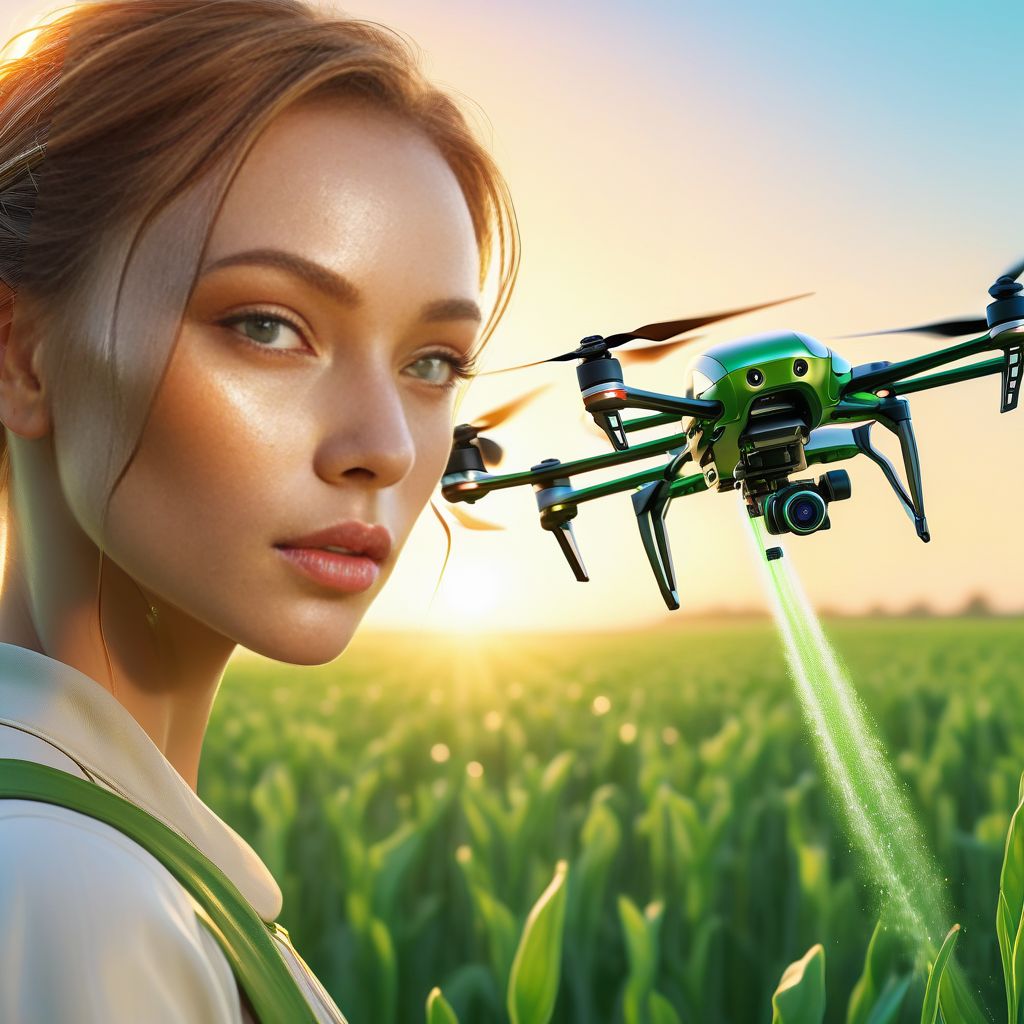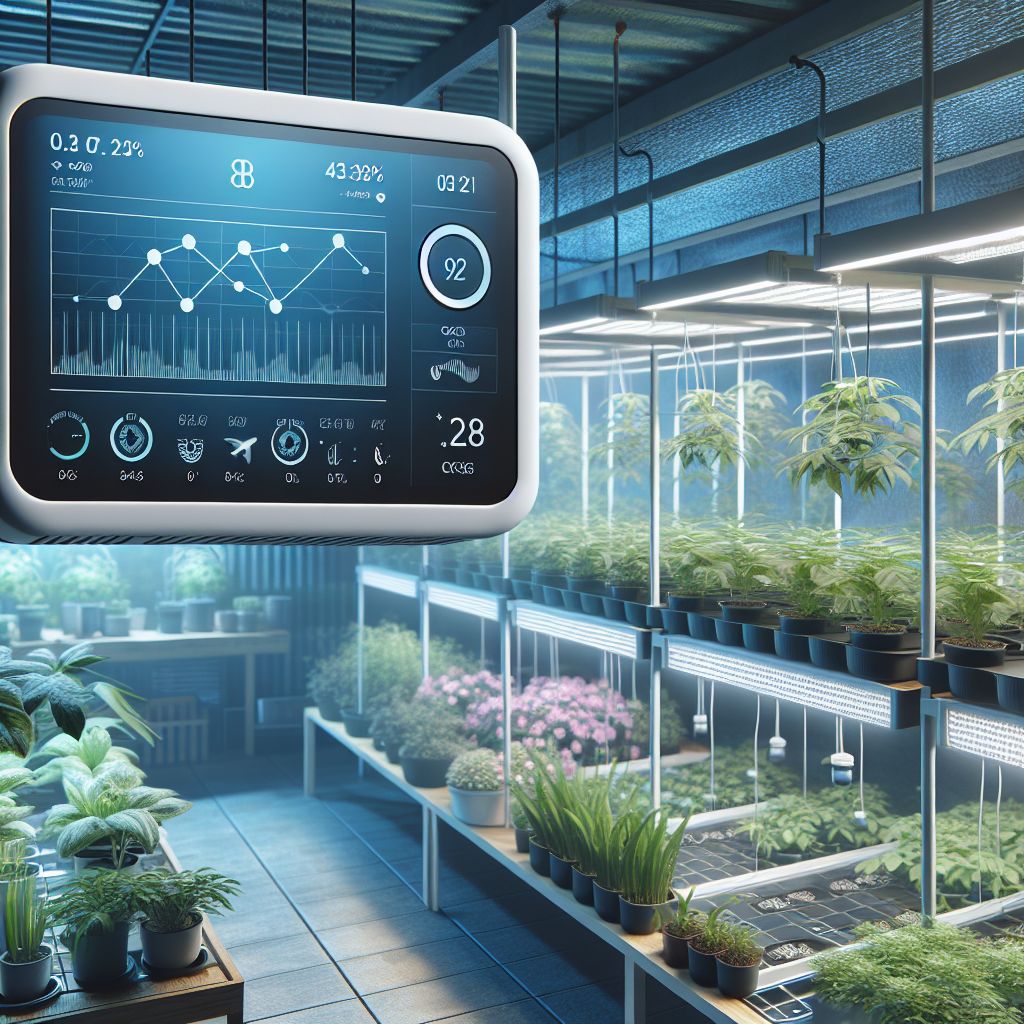Key Takeaways
- Combining both Raspberry Pi and Arduino can offer a comprehensive solution for the best greenhouse automation.
- Raspberry Pi offers advanced control with its ability to run full-scale operating systems and manage complex tasks.
- Arduino shines with its simplicity, reliability, and suitability for handling basic, real-time environmental monitoring and control.
- Both platforms have strong community support, but Raspberry Pi is better for networked solutions, while Arduino is ideal for standalone operations.
- Cost, ease of use, and specific greenhouse needs are critical factors when choosing between Raspberry Pi and Arduino.
Do you have questions about Raspberry Pi and Arduino in the context of greenhouse automation? Let’s address some of the most common inquiries to help you make an informed decision.
Can Raspberry Pi and Arduino Work Together for Greenhouse Automation?
Absolutely! Raspberry Pi and Arduino can complement each other beautifully in a greenhouse setting. You can use Raspberry Pi for tasks that require more computing power, such as data analysis or remote access, while Arduino can handle real-time monitoring and direct control of environmental factors. By combining their strengths, you can create a robust and versatile automation system.
For instance, you might use an Arduino to collect sensor data and control actuators, and then send that data to a Raspberry Pi for logging, analysis, and remote monitoring. This synergy allows you to take advantage of the best features of both platforms.
What are the Initial Costs for Setting Up Either System?
The initial costs for setting up a Raspberry Pi or Arduino system can vary depending on the complexity of your project. Generally, you can expect:
- Raspberry Pi: $35-$100 for the board and accessories, plus additional costs for sensors and actuators.
- Arduino: $20-$50 for a basic board, with additional expenses for modules, sensors, and components.
Keep in mind that these are approximate costs and can change based on the specific hardware and capabilities you require for your greenhouse.
Which System is More User-Friendly for Beginners?
For beginners, Arduino is often considered more user-friendly due to its straightforward programming environment and the abundance of learning resources available. Its simplicity makes it an excellent choice for those new to electronics and coding.
Raspberry Pi, while slightly more complex, still offers a user-friendly experience, especially for those with some computer knowledge. Its vast community and plethora of online tutorials provide ample support for newcomers.
How Do I Choose Between Raspberry Pi and Arduino Based on My Greenhouse Size?
The size of your greenhouse doesn’t necessarily dictate whether you should use Raspberry Pi or Arduino, as both can scale up or down depending on your needs. Instead, consider the complexity of the tasks you want to automate and the level of control you desire.
For a small greenhouse with basic needs, an Arduino might be sufficient. For a larger operation or one that requires more sophisticated control, a Raspberry Pi or a combination of both might be the better choice.
What are the Scalability Options When Expanding Greenhouse Operations?

Both Raspberry Pi and Arduino offer scalability options for expanding greenhouse operations. With Raspberry Pi, you can integrate additional modules and sensors, and even connect multiple Raspberry Pis together for a distributed network of controllers. With Arduino, you can add more boards and sensors, or use shields to expand the capabilities of your existing setup.
As your greenhouse grows, you can continue to build upon your automation system, adding new features and capabilities as needed. Whether you choose Raspberry Pi, Arduino, or a combination of both, your system can evolve alongside your greenhouse.
Plugging into Greenhouse Automation: Raspberry Pi and Arduino
Imagine walking into your greenhouse, greeted by the perfect bloom of tomatoes and the lush green of basil, all thriving under your watchful, yet surprisingly, hands-off approach. This is the power of greenhouse automation, a game-changer for gardeners who want to harness technology for optimal plant growth. Let’s explore how two popular platforms, Raspberry Pi and Arduino, can transform your greenhouse into a hub of precision and productivity.
Why Greenhouse Automation is a Game-Changer
Automation is all about making things easier, more efficient, and, most importantly, more effective. In the world of greenhouse gardening, this means creating an environment where plants can flourish with minimal manual intervention. Whether it’s adjusting humidity, controlling temperature, or timing the watering cycles, automation allows you to fine-tune the conditions to suit your plants’ needs perfectly.
Raspberry Pi and Arduino: A Quick Overview
Before we dive into the specifics, let’s get a quick lay of the land. Raspberry Pi is a tiny, affordable computer that you can use for a plethora of projects, including greenhouse automation. It’s got the brains to handle complex tasks and can connect to the internet for all sorts of smart controls.
On the other hand, Arduino is a microcontroller board that’s all about interacting with the physical world. It’s great for reading sensors and controlling motors or lights – the kind of hands-on stuff that’s crucial in a greenhouse.
Deciphering the Duo: Raspberry Pi for Advanced Control
When you need your greenhouse to be a bit of a brainiac, Raspberry Pi steps up to the plate. With its ability to run a full operating system like Linux, you can program it to do just about anything a regular computer can, but in the compact space of your greenhouse.
End-to-End Connectivity and Networking with Raspberry Pi
Raspberry Pi is the master of connectivity. It can talk to the internet, which means you can monitor your greenhouse from anywhere. Imagine sipping coffee at a café and checking on your plants with a few taps on your smartphone. That’s the kind of control Raspberry Pi offers.
The Power of Full-scale Operating Systems
Because Raspberry Pi runs on a full-scale operating system, it can multitask like a champ. You can have it collect data, make decisions, and even control cameras to keep an eye on every corner of your greenhouse. It’s like having a mini-computer dedicated to making your plants happy.
Arduino: The Go-To for Simplicity and Reliability
Now, if you’re after something a bit more straightforward, Arduino is your go-to. It’s the rugged, reliable friend that’s there when you need it. Arduino boards are designed to interact with sensors and control things like motors without breaking a sweat.
Stress Test: Arduino in Harsh Environmental Conditions
One of the best things about Arduino is its ability to withstand harsh environmental conditions that can be typical in a greenhouse. It’s not fussy – it just gets the job done, whether it’s sweltering heat or a chilly night.
The Perks of Open-Source Hardware for Beginners
Arduino is also incredibly beginner-friendly. It’s open-source, which means there’s a huge community of fellow greenhouse enthusiasts out there who are more than happy to share their knowledge and experience. Plus, there are tons of resources and tutorials to help you get started.
Performance and Computing Power
When it comes to the nitty-gritty of performance and computing power, Raspberry Pi is like the powerful engine in a sports car. It’s capable of processing data quickly, running complex algorithms, and multitasking. This makes it ideal for advanced greenhouse automation projects that require data analysis, such as predicting plant diseases or automating nutrient delivery based on plant growth stages.
Cost Comparisons and What’s Best for Your Buck
Let’s talk money because that’s always a key factor. A Raspberry Pi setup might cost you more upfront because you’re essentially getting a mini-computer. However, if you need its advanced features, it’s a worthy investment. On the flip side, Arduino boards are generally less expensive and perfect for more straightforward tasks like opening a vent or turning on a water pump. So, it usually costs less to get started with Arduino, but if you need more advanced control, Raspberry Pi could be more cost-effective in the long run.
Ease of Use for the Non-Tech Savvy
For those who might not be tech wizards, Arduino offers a gentle learning curve. Its programming environment is straightforward, and there are plenty of plug-and-play sensors and components available. Raspberry Pi, while not overly complex, does require a bit more tech know-how since you’re dealing with a full operating system and more complex programming languages.
Community Support and Resources
Both Raspberry Pi and Arduino boast vibrant, supportive communities. There’s a wealth of forums, how-to guides, and YouTube tutorials at your fingertips. Raspberry Pi’s community is great for more advanced topics, while Arduino’s community excels in helping beginners get their projects off the ground.
Real World Applications in Greenhouses
Let’s bring this to life with some real-world applications. Imagine using Raspberry Pi to automate the climate control in your greenhouse, ensuring your plants get the exact temperature and humidity they need. Or picture an Arduino system that manages the watering schedule, making sure your plants are hydrated just right – not too much, not too little.
Raspberry Pi: Automating for Optimal Plant Growth
With Raspberry Pi, you can take greenhouse automation to the next level. For example, you could use it to analyze weather forecasts and adjust the greenhouse conditions preemptively. Or, you could have it manage a hydroponic system, constantly tweaking the nutrient mix based on the growth stage of your plants.
Arduino: Precision Tools for Critical Tasks
Arduino is perfect for precision tasks that are critical to plant health. For instance, it’s great for monitoring soil moisture levels and activating irrigation systems. Or you could use it to control the opening and closing of vents based on the temperature and humidity readings, ensuring your plants get the fresh air they need.
Step-by-Step Guides
Now, let’s walk through setting up both systems in your greenhouse. I’ll guide you step by step, so you can feel confident as you embark on this exciting journey of greenhouse automation.
Setting Up Your Raspberry Pi as a Greenhouse Sentinel
- First, get your Raspberry Pi kit, which includes the Pi itself, a power supply, and an SD card with the operating system pre-installed.
- Connect the Raspberry Pi to a monitor and a keyboard for the initial setup.
- Install greenhouse management software or write a Python script to read sensors and control devices.
- Connect your sensors and control elements like relays for pumps or fans to the GPIO pins on the Raspberry Pi.
- Test each component individually to ensure everything is working correctly.
- Finally, place your Raspberry Pi in a safe, dry place in your greenhouse and let it take over the monitoring and control tasks.
With your Raspberry Pi set up, you’ll have a central hub that can handle multiple tasks, from monitoring environmental conditions to providing remote access for you to check in on your plants from anywhere.
Implementing Arduino for Moisture and Temperature Control
Setting up an Arduino for basic moisture and temperature control is a great way to start your automation journey. You’ll need an Arduino board, a temperature and humidity sensor, a soil moisture sensor, and a relay module to control a water pump or a fan.
First, connect your sensors to the Arduino board and upload a simple sketch to read the sensor data. Then, use the relay module to turn on a water pump when the soil gets too dry or a fan when the temperature gets too high. Test everything to make sure your system reacts as expected to changes in the environment.
With these steps, your Arduino will be the guardian of your greenhouse, keeping a watchful eye on the moisture and temperature, ensuring your plants are always in their happy place.
Final Thoughts: Picking Your Greenhouse Partner
So, which one should you choose? Well, it depends on your needs. If you’re looking to perform complex tasks and want internet connectivity, go for Raspberry Pi. If you want something simpler and more robust, especially if you’re just starting out, Arduino might be the way to go. Remember, there’s no one-size-fits-all answer here. The best choice is the one that aligns with your greenhouse goals and your comfort level with technology.
And remember, you’re not limited to one or the other. Many gardeners use both Raspberry Pi and Arduino in their greenhouses to get the best of both worlds. Raspberry Pi can handle the heavy computing and internet connectivity, while Arduino takes care of the real-time sensor readings and controls.
Ultimately, the goal is to create a thriving greenhouse, and whether you choose Raspberry Pi, Arduino, or both, you’re on the right path. Embrace the journey, and enjoy the fruits (and vegetables) of your labor!
Final Thoughts: Picking Your Greenhouse Partner
As we’ve journeyed through the world of greenhouse automation, we’ve seen the strengths and unique capabilities of both Raspberry Pi and Arduino. It’s clear that each platform has its place in the greenhouse, and the decision of which to use depends heavily on the specific needs and goals of your setup. Whether you prioritize advanced control, ease of use, or cost-effectiveness, there’s a solution that’s right for you.
Raspberry Pi or Arduino: Making the Informed Decision
For those of you looking to integrate sophisticated computing power and networking into your greenhouses, Raspberry Pi stands out as the superior choice. Its ability to run a full operating system and handle complex tasks makes it ideal for more advanced automation projects.
Conversely, if you’re just dipping your toes into the waters of greenhouse automation or prefer a more straightforward, robust system, Arduino is your best bet. Its simplicity and reliability are unmatched for basic, real-time monitoring and control tasks.
- If you need advanced control, data processing, and remote access, choose Raspberry Pi.
- For simpler, more straightforward automation tasks, Arduino is the way to go.
- Consider the cost, as Raspberry Pi generally requires a larger initial investment than Arduino.
- Think about ease of use and the learning curve associated with each platform, especially if you’re new to technology.
- Remember that combining Raspberry Pi and Arduino can offer a comprehensive automation solution.
In the end, the choice between Raspberry Pi and Arduino is not about finding the perfect platform, but rather the right tool for the job at hand. Consider your greenhouse’s specific needs, your technical expertise, and your budget to make the best decision for your green thumb adventures.
In conclusion, greenhouse automation with Raspberry Pi and Arduino opens up a world of possibilities for gardeners. By making an informed decision based on your specific needs, you can harness the power of technology to create a thriving, productive greenhouse. So, get out there and start automating—your plants will thank you for it!
When it comes to automating your greenhouse, two popular choices are the Raspberry Pi and Arduino platforms. Both offer unique advantages for different types of greenhouse operations. The Raspberry Pi is a fully functional computer, capable of running a full operating system and handling multiple tasks simultaneously. On the other hand, Arduino boards are microcontrollers, which are ideal for performing single tasks repeatedly and with high precision. Your choice between the two will depend on the complexity of your automation needs and your technical expertise.





